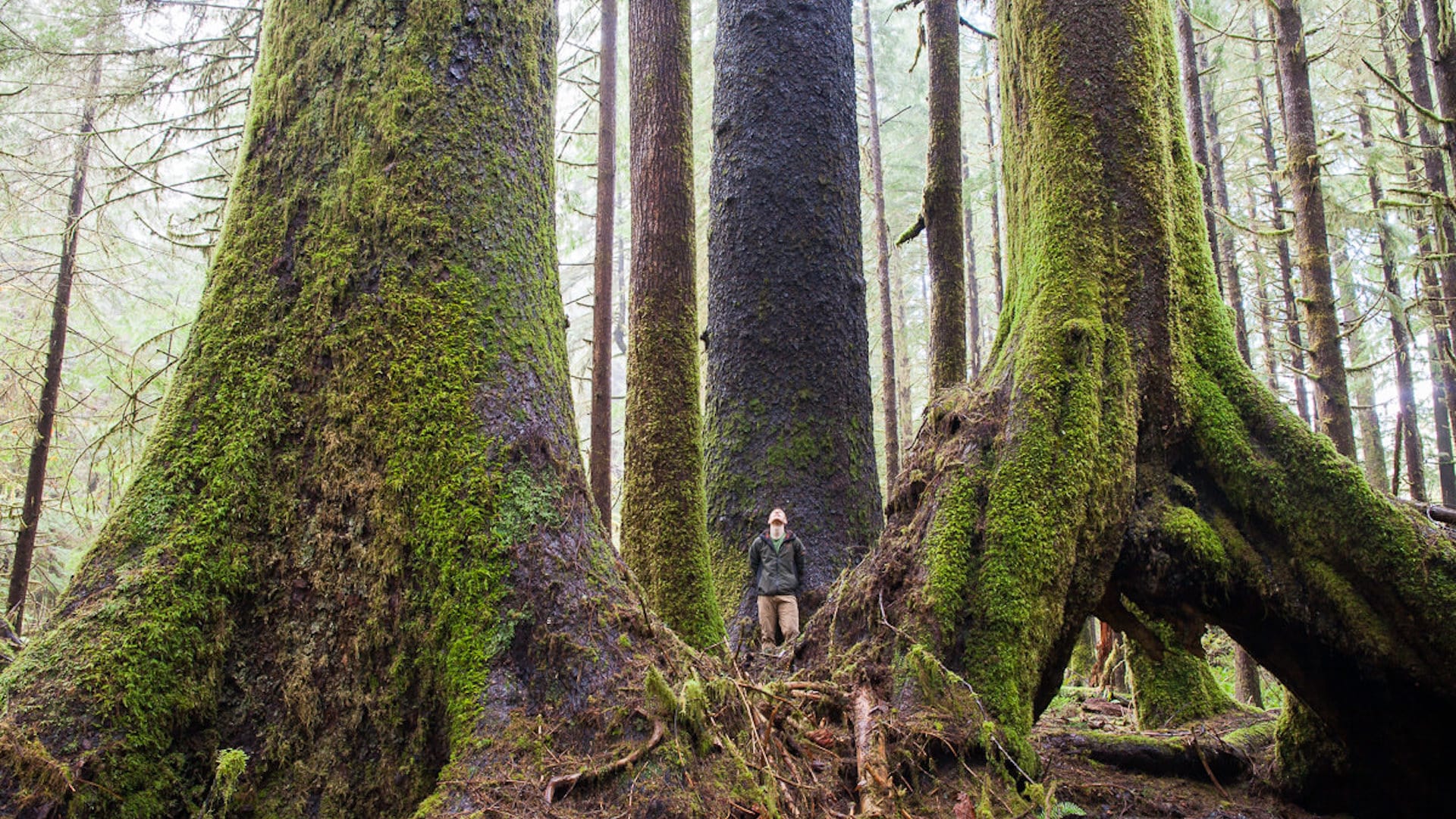Ever heard the saying “can’t see the forest for the trees?”
It’s when you are standing too close to something and lack the broader perspective and are not able to see the big picture. Or, if you are looking at things one at a time, you might not see their connection with all the others.
You can use this saying as an analogy for literally any situation, so it’s deeply ironic that it arises in the recent announcement by the BC NDP provincial government that they are going to protect 54 individual old-growth trees plus the hectare immediately in their vicinity, or their “friends.”
I won’t complain about the 54 trees they are protecting. It’s a big victory that the province is not allowing the entire forest to be logged right up to the ancient creature’s stem, like we see with “Big Lonely Doug.” However, it’s disturbing that there is so little willingness to step up and do what actually needs to be done. Chiefly, we need to protect the integrity and function of ecosystems, not trees.
As we heard consistently throughout the Spring legislative session, the Minister of Forests, and his government, see only the value of the fibre. The value of a standing old-growth forest seems to be only in its economic potential for it to become a clearcut. That’s it. The government’s message box is an attempt to have it both ways, maintain the status quo and change. The direct quote from Minister Doug Donaldson from Question Period is,
“We’re committed to protecting old-growth forests as well as continuing with a vibrant forestry sector — the 24,000 jobs that rely on old-growth forests in this province. And we’re undertaking an old-growth management plan, and we’ll be conducting public engagement soon on that plan.”
Saving a tree is not protecting forests
It appears this is the first step in the development of the management plan. The public consultation is coming soon.
Unfortunately, forestry “management plans” are actually a euphemism for tree cutting plans.
It’s simply not good enough to protect individual trees. What we need is watershed management plans or ecosystem management plans. As our world changes around the last remaining old-growth forests, they are quickly becoming far more valuable than just the amount we can make by turning them into two by fours. It’s the oxygen we breathe and the water supply of our communities. One ministry logs and another has to swoop in and fix the mess with a $150 million engineered solution; there is seemingly no connection between the two — except, for the future of your community and your tax dollars.
What hasn’t changed is the government’s message box. Even with a change in Minister and a change in government, the message box does not change. Perhaps it’s time to step back and take a look at the forest for the trees.


At a juncture where many are bleating about protecting wild salmon, it seems laughable that 54 hectares of forest be protected, ignoring the wider web of connections to which you refer above. There is not only room for broader and deeper thinking on forest renewal, but a crying need for plans that put people to work creating the circumstances for the forest to regenerate. Looking at how different our future is appearing from what our past has been, it might be a good idea to rethink our destructive and extractive ways.
Well said…
What is the value of decision making when neither “peer reviewed” science; ready public transparency; and a complete negation of international sentiment continue to hold sway on the public wealth.
Agreed; ecology; eco-system; as a rhetorical strategy seems to have lost their compelling cadence. What does motivate this change in understanding…?